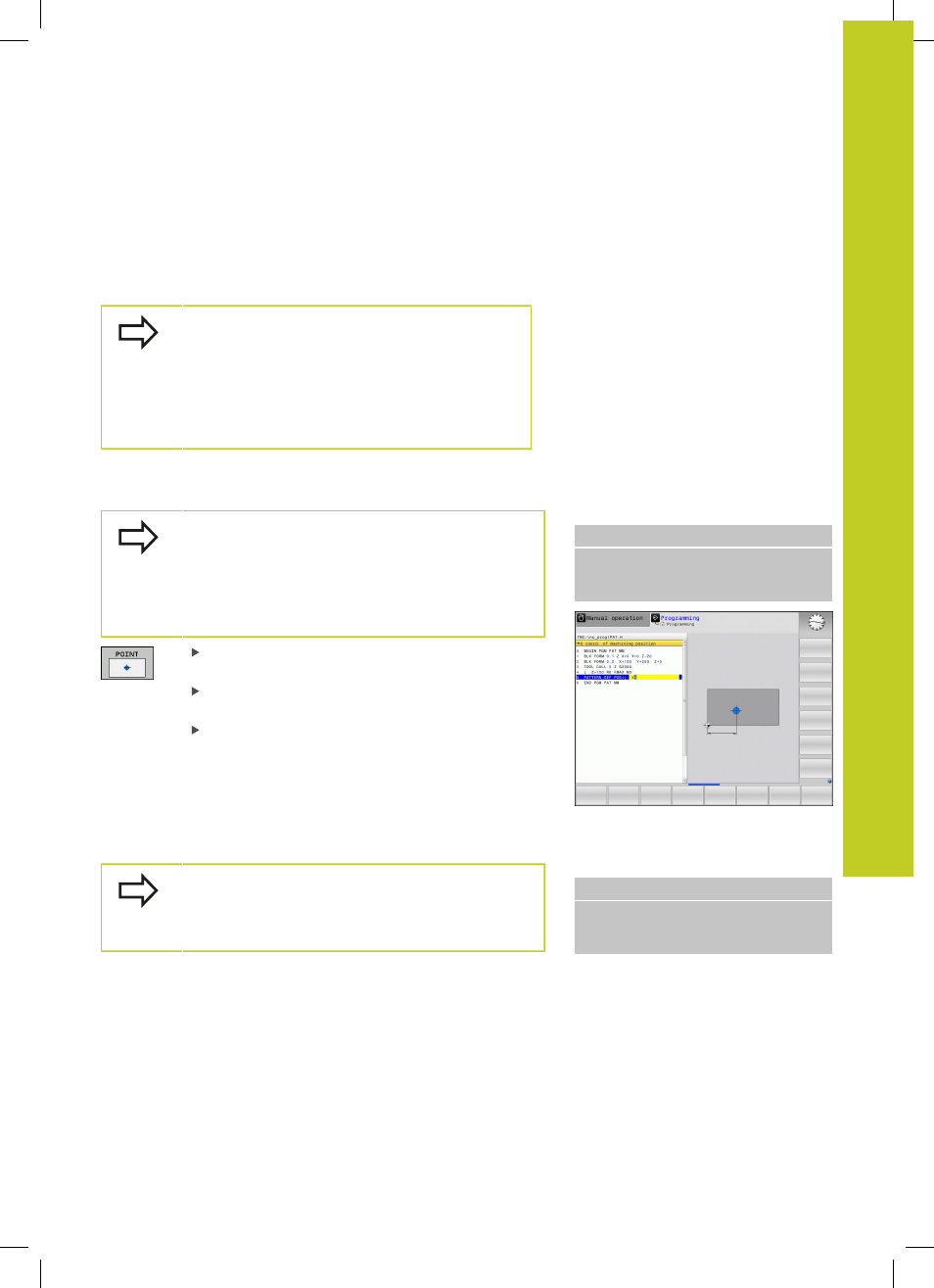Using pattern def, Defining individual machining positions, Defining a single row – HEIDENHAIN TNC 128 (77184x-02) User Manual
Page 379: Pattern def pattern definition 15.4

PATTERN DEF pattern definition 15.4
15
TNC 128 | User's Manual HEIDENHAIN Conversational Programming | 5/2014
379
Using PATTERN DEF
As soon as you have entered a pattern definition, you can call it
with the
CYCL CALL PAT function "Calling a cycle", page 376. The
TNC then performs the most recently defined machining cycle on
the machining pattern you defined.
A machining pattern remains active until you define
a new one, or select a point table with the
SEL
PATTERN function.
You can use the mid-program startup function
to select any point at which you want to start or
continue machining see "Any entry into program
(mid-program startup)", page 339.
Defining individual machining positions
You can enter up to 9 machining positions. Confirm
each entry with the
ENT key.
If you have defined a
workpiece surface in Z not
equal to 0, then this value is effective in addition to
the workpiece surface
Q203 that you defined in the
machining cycle.
X coord. of machining position (absolute): Enter X
coordinate
Y coord. of machining position (absolute): Enter Y
coordinate
Coordinate of workpiece surface (absolute): Enter
Z coordinate at which machining is to begin
NC blocks
10 Z+100 R0 FMAX
11 PATTERN DEF POS1
(X+25 Y+33.5 Z+0) POS2 (X+50 Y
+75 Z+0)
Defining a single row
If you have defined a
workpiece surface in Z not
equal to 0, then this value is effective in addition to
the workpiece surface
Q203 that you defined in the
machining cycle.
NC blocks
10 Z+100 R0 FMAX
11 PATTERN DEF ROW1
(X+25 Y+33.5 D+8 NUM5 ROT+0 Z
+0)
